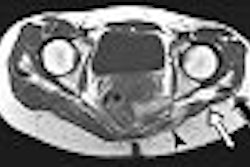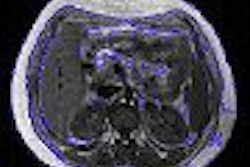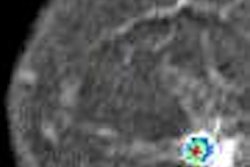Preliminary data from some U.S.-funded MRI facilities suggests that there is a strong business case for spending $20,000 or more each year just to reduce the likelihood of accidents in the MRI suite. Incidents in the magnet room are often costly due to combinations of lost revenue, repair expenses, and medical care and litigation if a patient or staff member becomes injured. While accidents in the MRI suite stem from many different origins, a frequent cause is undertrained maintenance or service personnel entering the magnet room.
What if, by choosing appropriate lights, wall surface, flooring, and ceiling materials for your magnet room, you could slash the need for periodic maintenance and, as a result, help to protect magnet uptime and reduce the risks of service-interrupting accidents? The good news is you can!
By selecting products and materials specifically designed for the MRI environment, maintenance requirements and associated downtime -- which cost about $15 to $20 per minute in lost revenue -- can plummet. Reducing maintenance and upkeep also reduces the likelihood of accidents arising from unscreened contractors and their typical tools and supplies.
One component of MRI suite construction can be virtually maintenance-free for the life of the magnet -- room lighting. Contemporary light emitting diode (LED) illumination designed for the MRI environment can have a functional life of 100,000 hours or more. Contrast that with a conventional incandescent 75-watt bulb, which has a rated life of 2,000 hours. This may mean that, for the entire life of the magnet, maintenance will never need to enter the suite to change a light bulb.
LED lights have other added benefits over conventional incandescent bulbs. They utilize far less electricity and emit much less heat than conventional bulbs. And by not having a filament, LED lighting eliminates the potential for an image-degrading artifact that can appear when an incandescent bulb's filament is cracked. It is also possible to achieve many of these same benefits by using fiber-optic "light pipes," which allow you to have the lamp in an adjacent area and conduct the light to a room through specially designed fiber-optic cables.
It seems that maintenance "to do" lists always include areas in which a loose wallpaper seam needs to be glued down and gouges in paint need touching up. As with all maintenance activities, wall repair, too, invites the risk of accident in the MRI suite. To reduce these risks, it is wise to minimize the maintenance cycle of the finishes on the wall. Wallpaper or vinyl wall coverings can be very attractive but may also require more frequent touch-up maintenance than paint surfaces. One of the best maintenance protections for wall surfaces is quality workmanship.
Good paint products that are applied well (primer coat plus at least two finish coats) can last for many, many years. Special nonmarking paints can help minimize scuffs and scratches. Couple these paints with wisely placed wall guards and rub rails to keep gurneys, tables, and MR-safe room equipment from impacting the walls, and the room should look good for many years. A highly durable and washable paint that we frequently specify is Iowa Paint's ceramic paint.
Flooring maintenance is one of the most common sources of major accidents in the MRI suite. There is no shortage of photos, even videos, depicting floor buffers stuffed in the bores of MRIs. Assuming you haven't locked the cleaning crew out of the MRI suite, it is important to provide distinctive flooring surfaces to help convey to cleaning crews that they are not to use conventional procedures to clean and maintain floors in the magnet room.
Vendors clamor for static-dissipating flooring, which may be overkill in many situations. Select flooring systems and materials that do not need to use floor buffers to maintain and that have reduced maintenance cycles. Think, too, about the ever-increasing number of image-guided and interventional applications and choose the best flooring on the basis of their technical requirements and clinical applications. Don't use conventional vinyl 12-inch square tiles, or flooring material selected solely for its looks.
Given the need for MRI vendor engineers to access cabling, piping, and ductwork above the ceiling in an MRI suite, it is advantageous to have a grid ceiling with removable tiles. The major ceiling vendors each have all-aluminum grid systems and ceiling tiles with a range of maintenance and sound-absorbing qualities. But having an aluminum grid is defeated if the fasteners and hanging wire aren't nonferrous, too.
And speaking of ceilings and reduced maintenance, it is also important to keep out all piping, plumbing, and mechanical equipment, which is typically located above the ceiling, outside the magnet room space. A leaky pipe feeding a fan box for an air-conditioning system is an open invitation for a maintenance worker with a steel pipe wrench to come in and fix that leak.
Lighting, wall finishes, flooring, and mechanical equipment are just four of the hundreds of design decisions that must be made for the design and construction of MRI facilities, but these four quickly illustrate how effective selection of materials and design of building systems can help protect patients, staff, and million-dollar pieces of equipment.
Simply changing finishes, by itself, won't eliminate accidents in the MRI suite. Low-maintenance finishes still need attention, but special means of care must be communicated to housekeeping and maintenance/facilities staffs. When designed to support the appropriate operational protocols, selecting the appropriate finishes can make a real impact on operations and safety.
Given the extreme costs of MRI accidents and the "annuity value" of preventing accidents, spending a few extra dollars to ensure that your MRI suite is expertly designed and provided with the lowest maintenance finishes is money very well spent.
By Tobias Gilk
AuntMinnie.com contributing writer
August 14, 2006
Reprinted from www.mri-planning.com by permission of the authors. If you would like more information on any aspect of MR facility design or safety, please contact Robert Junk or Tobias Gilk at Jünk Architects.
Related Reading
What TV's 'House' teaches us about MRI and safety, August 1, 2006
Magnet room equipment and furnishings: The ultimate caveat emptor, July 19, 2006
Selecting a site for your next MRI suite: It pays to plan ahead, July 12, 2006
Radiology is dead -- long live imaging! June 23, 2006
Keeping Zone III secure: Access controls for MRI suites, June 7, 2006
Copyright © 2006 Jünk Architects, PC



















